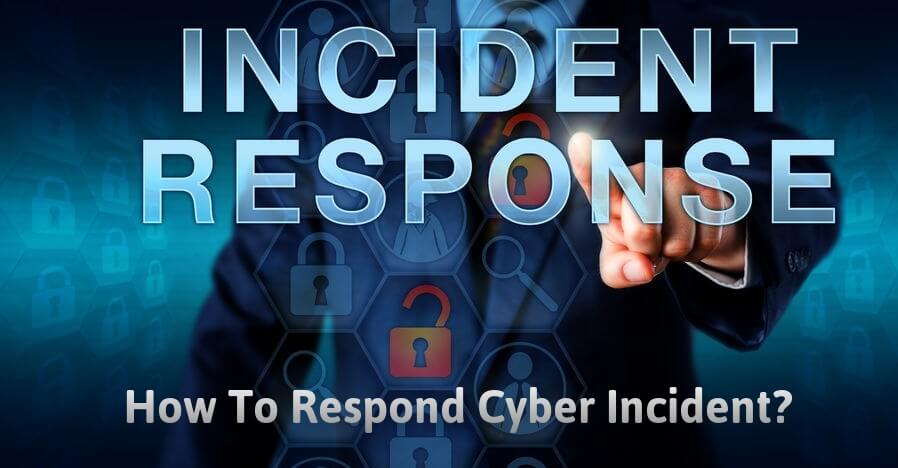An incident response plan is very essential for any organization to respond to an incident as quickly as possible. Here we have overviewed how to respond to the cyber incident and the necessary action that needs to be taken.
Vulnerability factor abuses how vulnerable an association or government foundation is to digital Incidents.
A PC arrange assault upsets the honesty or realness of information, typically through malicious code that adjusts program logic that controls information, prompting blunders in yield.
Our developing reliance on innovation, networks, and information implies that organizations show a greater assault surface than at any other time.
Directed assailants have turned out to be more proficient at misusing their casualties’ vulnerabilities to infiltrate corporate barriers while ‘flying under the radar’.
Lamentably, corporate data security administrations are regularly ill-equipped.
Their representatives think little of the speed, mystery, and proficiency of present-day digital assaults, and organizations regularly neglect to perceive how inadequate the old ways to deal with security are.
Indeed, even where organizations supplement conventional counteractive action apparatuses, for example, hostile to malware items, IDS and IPS, and security scanners with recognition arrangements, for example, SIEM and against APT, they may not be utilized to their maximum capacity.
The phases of the Keychain for Incident Response Plan :
Observation (finding out about the objective)
Weopanisation (picking the strategy for assault)
Conveyance (settling on the assault vector)
Misuse (abusing a defenselessness to pick up an underlying dependable balance)
Establishment (introducing the malware)
Command-And-Control (interfacing with the assailants’ server for facilitating directions)
Activities On Objective (accomplishing the attacker’s objectives)
What is the incident response process?
Stage 1 – Contact Security Experts
Incorporate agents from every single significant territory, including IT, to follow and manage any specialized imperfections that prompted the breach; and corporate issues, in the event that contact with experts, is required, to oversee media and client interchanges.
Appoint one pioneer who will have a general obligation regarding reacting to the breach.
In the event that your association doesn’t have these abilities, look for help from outsiders at the beginning time, try not to freeze, and gather a task force.
Also, Read Key Elements and Important Steps to General Data Protection Regulation (GDPR)
Stage 2 – Analyse the Breach
The task force should first recognize the reason for the breach and guarantee that it is contained during the incident response.
Introducing patches, Resetting passwords, Disabling network access, and Finding a way to review or erase data, for example, reviewing messages.
Take care to guarantee that means taken to contain the break don’t unintentionally trade-off the trustworthiness of any examination.
Stage 3 – Find out Data Involved with Breach
In the event that the information contains data that could be utilized for wholesale fraud or other criminal movements, (for example, names, dates of birth, and MasterCard numbers) or that could be delicate, (for example, restorative records), the breach ought to be dealt with as more serious.
On the off chance that the information has been encoded or anonymized, there is a lower danger of mischief.
In the event that there has been considered hacking, as opposed to an incidental break of security, at that point the results for the applicable people or associations could be considerably huge. This ought to educate how you react to the breach.
Stage 4 – Issue Warning to the Customer
During the incident response, For genuine information security breaches, proactive notice is, for the most part, the correct technique.
Regardless, there are great motivations to think about deliberate warnings, which include: Victims might have the capacity to ensure themselves, for instance by evolving passwords, scratching off Master cards, and checking bank explanations.
Stage 5 – Mitigation
Having tended to the quick danger, the counteractive action is the last advance. Connecting with an information security specialist, will give you a crisp viewpoint on your current practices, and help to console clients and others that you work with.
Instantly curing any recognized security imperfections – changes ought to be reflected in information security arrangements and preparing records.
In the event of the information security team has to respond to multiple incidents simultaneously, it’s important to correctly set priorities and focus on the main threats.
The general technique incorporates the accompanying advances :
1) Planning for the incident response (build up the apparatuses, strategies, and procedures expected to guard the association).
2) Distinguishing proof (choose if an occurrence has happened by recognizing per-characterized triggers).
3) Regulation (confine the extent of the episode and keep up business progression).
4) Destruction (re-establish the framework to its per-occurrence state).
5) Recovery (re-interface the influenced frameworks to the more extensive system).
6) Lesson Learned (how well did the data security group manage the episode and what changes should be made to the system).












.webp)